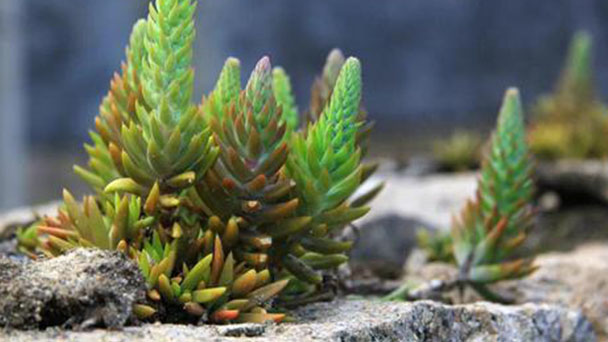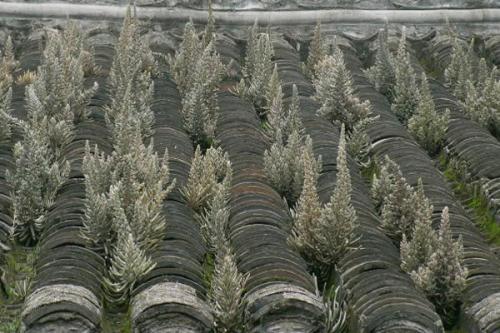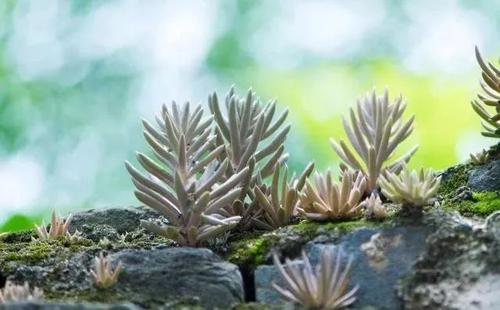Orostachys profile
Written by Maggie
Feb 10 2021

Orostachys is the whole grass of Orostachys or late-red Orostachys, which is widely distributed on the sun-facing slopes of deep mountains, between rock crevices and between ancient roofs. Orostachys is drought-resistant and cold-resistant. Orostachys has the functions of relieving heat and detoxification, hemostasis, dampness, swelling, vomiting blood, epistaxis, blood dysentery, hepatitis, malaria, heat drop, hemorrhoids, eczema, carbuncle poison, whitlow boil, soup fire burn and so on. Orostachys grow on stony hillsides and rocks, and on the roofs of tiled or grass houses. Harvest in summer and autumn, uproot the whole plant, remove the roots and impurities, repeatedly drying several times to dry, or fresh.
Orostachys picture

Morphological characteristics of Orostachys
Orostachys are biennial herbs. Leaves of annual rosette are short; Rosette is linear, apex enlarged, white cartilaginous, semicircular, dentate. Biennial flower stems are generally 10-20 cm tall, small only 5 cm long, sometimes up to 40 cm tall; Leaves of orostachys are alternate, sparsely spiny, linear to lanceolate, up to 3 cm long and 2-5 mm wide. Inflorescences are racemose, compact, or proximally branched, pyramidal to 20 cm wide;Bracts linear-acuminate; Pedicels of Orostachys are 1 cm long, sepals 5, oblong, 1-3 mm long; Orostachys has 5 petals, red, lanceolate elliptic, 5 -- 6 x 1.2 -- 1.5 mm, apex acuminate, base 1 mm connate; Orostachys has 10 stamens, as long as petals or slightly shorter, anthers purple; Orostachys has 5 scales, subquadrate, 0.3 -- 0.4 mm long, apex slightly concave. Follicles 5, oblong, 5 mm long, beak fine, 1 mm long; Orostachys have many seeds, ovate, fine.
Growth environment and distribution of Orostachys
Orostachys growing environment: on stony hillsides and rocks and roofs of tiled or grass houses. Orostachys are widely distributed in the deep mountain to the sun slope surface, between the rock gap, the old house tile seam also has the growth, drought and cold resistance. Orostachys grows on roofs, on walls and on rocks. Orostachys was born on a roof or rock.
Orostachys distribution: most of the country is produced. It is distributed throughout the country. Orostachys are distributed in Liaoning, Jiangsu, Zhejiang and other places. Northeast China, North China, Inner Mongolia, Mongolia, Soviet Union (Far East, East Siberia), Korea, Japan also have.
Orostachys function
Early cultivation in Japan, Orostachys was used to treat fire wounds, knife wounds, with its fleshy leaves for medicinal use, and then gradually developed into ornamental cultivation, Japan's name "rock lotus". The genus is often seen between the tiles on the roofs of old houses in our country, so it is called "Orostachys" in our country. Around 1900, someone in Japan created the cultivated variety "Fuji" from the Orostachys variety native to Japan, which at that time was worth 1000 times the price of rice at that time!! It can be seen that ordinary varieties, after artificial cultivation, can also produce excellent and ornamental varieties. Today, Orostachys such as "Fuji", which have a place in the succulent family, are still prized.

Orostachys propagation methods
In the case of Orostachys, the propagation of Orostachys can be divided into ramet propagation and seed propagation.
Orostachys division method is simpler. During the growing season, especially in the summer, the mother plant of Orostachys produces daughter plants around it, which can be used for reproduction. The seedlings of Orostachys that grow on the plant are peeled off, those that have roots are directly on the pot, those that have no roots are dried to the wound, and the cuttings are planted in the sand and can be planted after taking root.
Orostachys sowing method is suitable for mass reproduction and roof greening construction. The seeds of Orostachys have no dormancy characteristic and are suitable for harvest and sowing after autumn maturity. Generally in the warm and wet spring, if planted in the greenhouse can be all year round. When sowing, the seeds of Orostachys are scattered in 5 portions of river sand and 1 portion of loess, mixed evenly, poured on the permeable sowing soil, covered with plastic film to keep wet, which has a higher seedling emergence rate. But the seedlings grow slowly and need two years of cultivation before they can blossom.
Prevention and control of diseases and pests of Orostachys
Most of the Orostachys in the wild have eggs, so it's best to take them home and raise them in isolation for a while. Insect outbreaks usually occur in the fall, so be sure to take precautions.

Latest Updated
- Benefits of Bugleweed - 7 Science-backed Health Benefits
- Bugleweed Dangers & Side Effects - Is It Poisonous?
- How to Plant Evergreen Trees - What You Should Know
- When to Plant Evergreens - Grow Guide for Evergreen Trees
- 12 Wonderful Evergreen Shrubs for Your Garden
- 12 Popular Evergreen Plants with Pictures for Beginners
- When And How To Prune A Lilac Bush Like a Pro
- How to Grow & Care for Lilac Vine (Hardenbergia Violacea)
- Japanese Lilac Tree (Syringa Reticulata) Care & Propagation Guide
- Shumard Oak Pros and Cons - What to Know
Popular Articles
- Winter maintenance of Antirrhinum Majus
- How to Grow Terminalia Mantaly Tree
- How to Grow and Care for Crossostephium Chinense
- How to grow Antirrhinum Majus in spring
- Peristeria Elata (Dove Orchid) Profile: Info & Care Guide
- Underwatered Snake Plant (Sansevieria Trifasciata) - Signs And How To Fix
- How to Care for Brazilian Jasmine Plant (Mandevilla Sanderi)
- How to Grow & Care for Graptopetalum Purple Delight in Summer
- Rosa Chinensis (China Rose): Plant Growing & Care Tips
- How to Care for Baby Sun Rose (Aptenia Cordifolia)